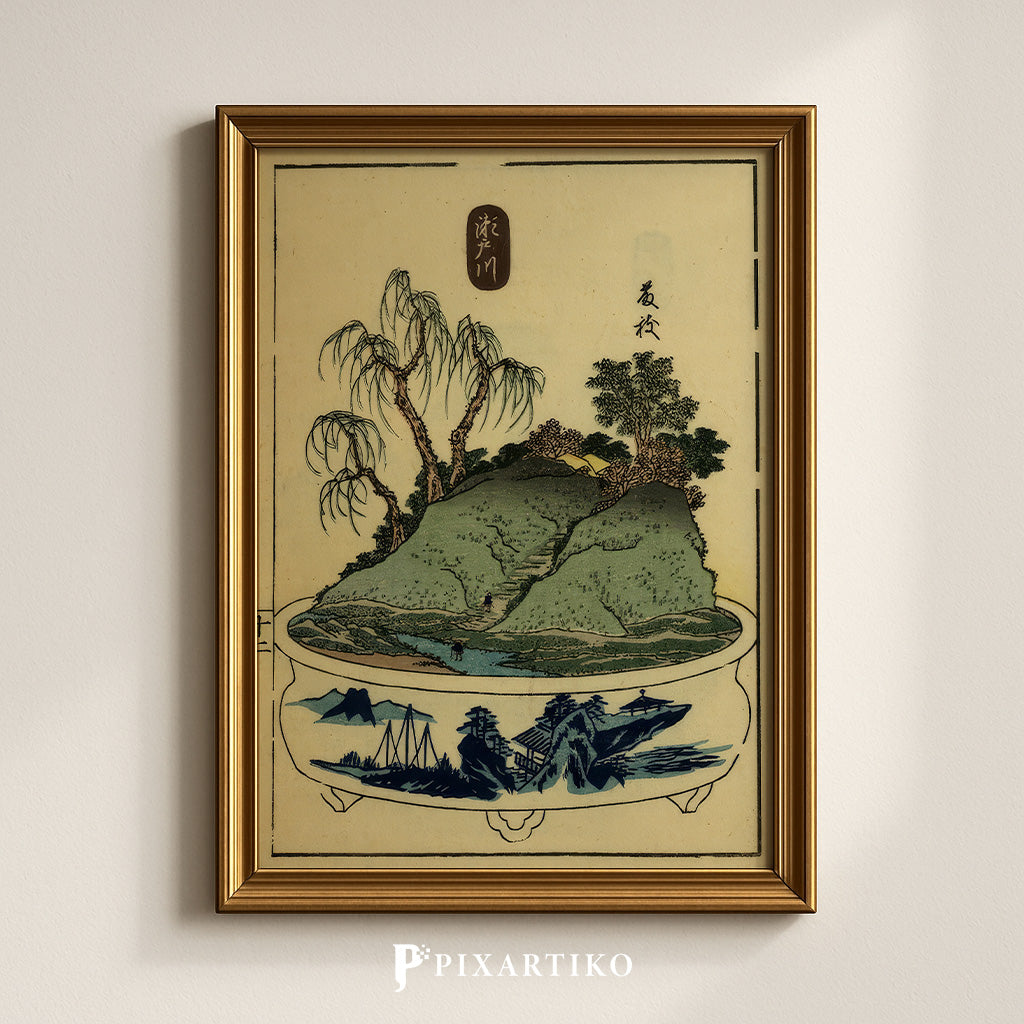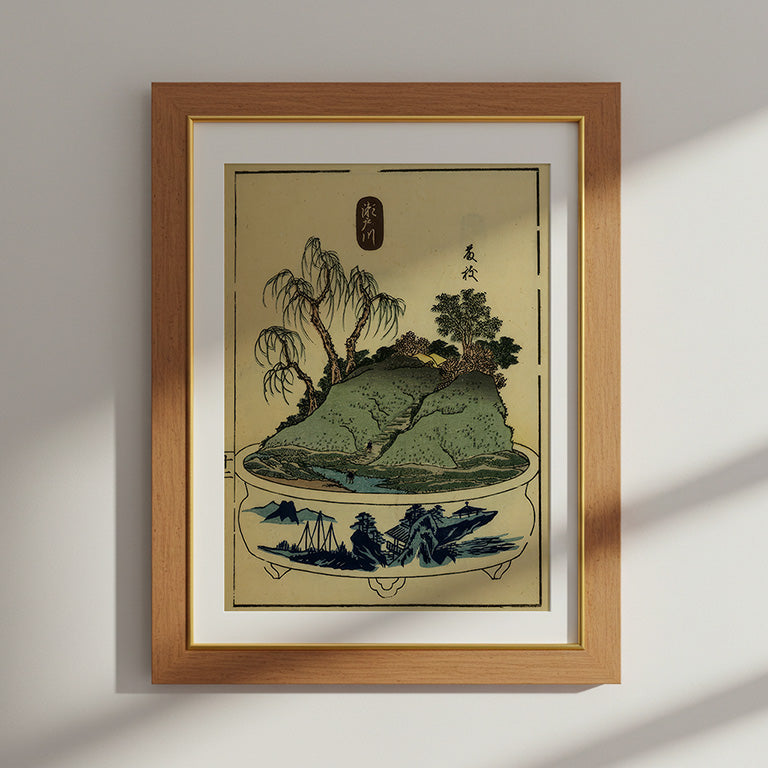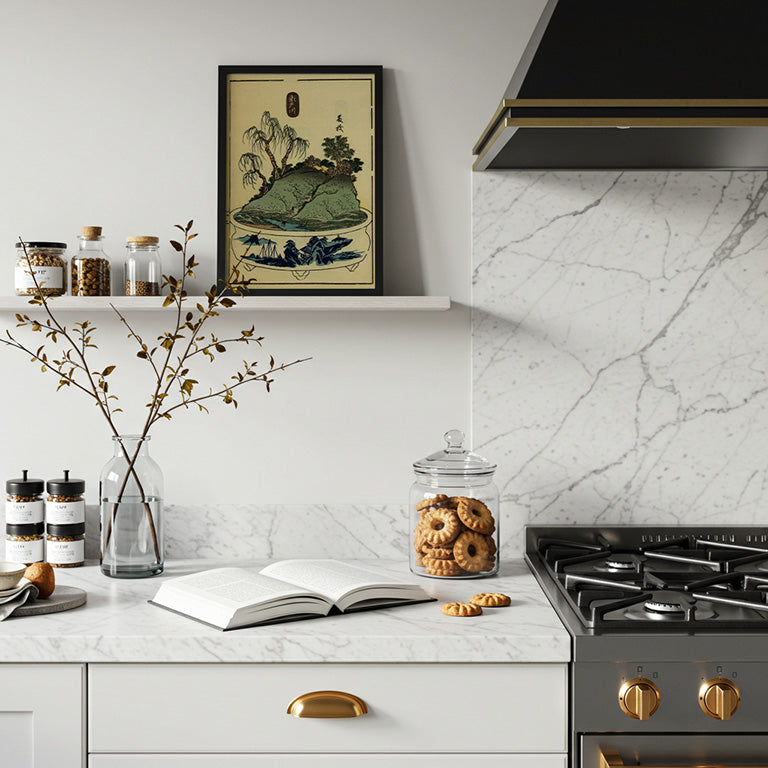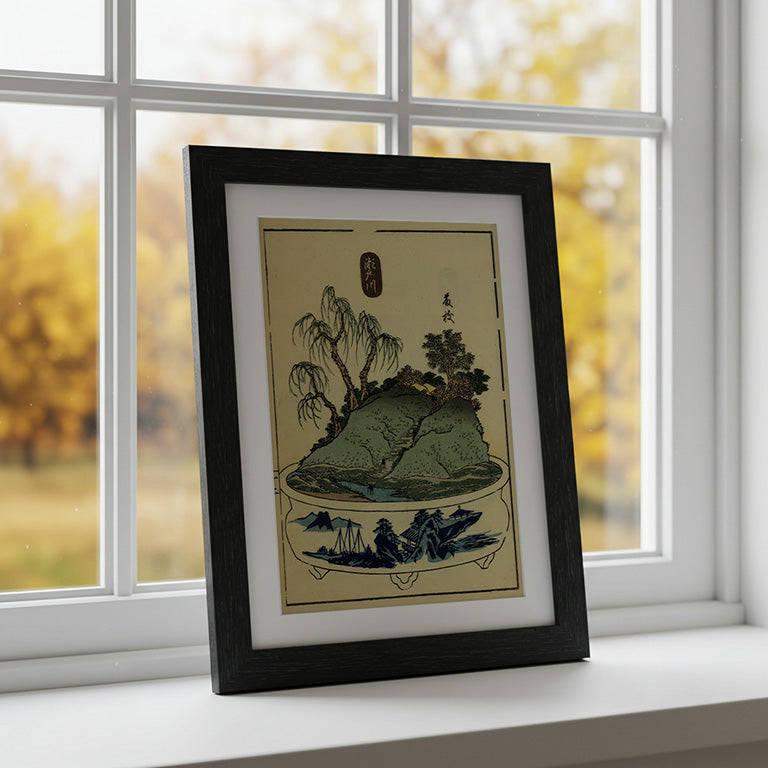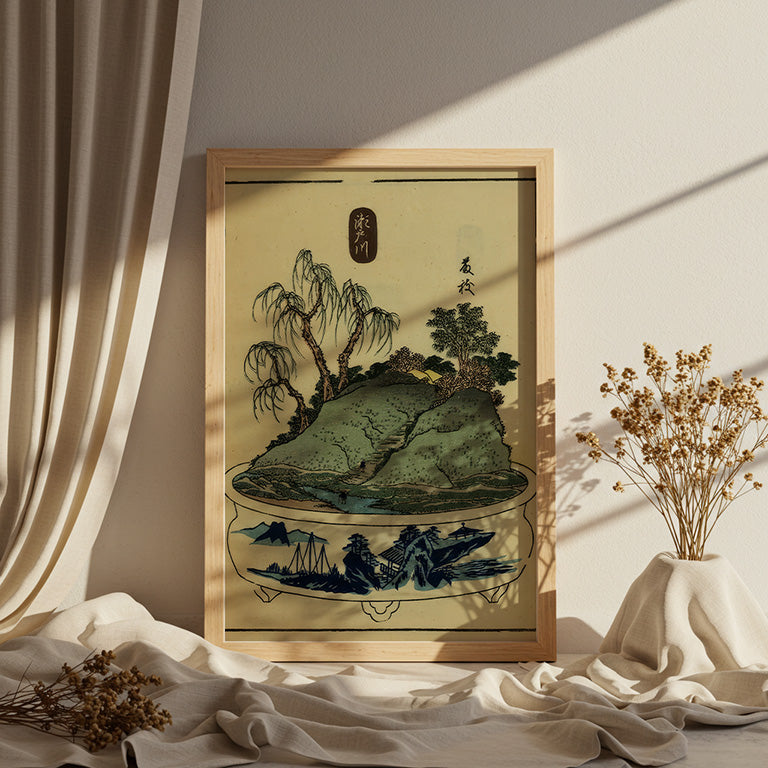"Yokkaich – Tōkaidō Bonsai View" | Vintage Japanese Landscape
"Yokkaich – Tōkaidō Bonsai View" | Vintage Japanese Landscape
No se pudo cargar la disponibilidad de retiro
Vintage Japanese Landscape Art Print | 1848 Ukiyo-e Digital Download | Zen Wall Decor for Home & Office
Bring a tranquil piece of Edo-period Japan into your home with this high-resolution digital art print from the series 53 Stations of the Tōkaidō as Potted Landscapes (1848). This scene, representing Yokkaichi, features a lush hilltop trail, gently sloping paths, serene willows, and miniature figures all enclosed in an ornate bonsai pot—fusing traditional Japanese landscape art with playful imagination.
Perfect for fans of Ukiyo-e prints, bonsai aesthetics, and Japanese culture wall decor.
➤ Instant digital download
➤ Printable in high resolution for zen home, studio or gallery walls
➤ Ideal gift for lovers of vintage Japanese art, bonsai enthusiasts, or collectors of tranquil scenery

Pixartiko Collective – Usage License
Prints allowed for personal use and resale only as physical products in local shops. Use in other physical goods permitted if pixartiko.com is credited when possible.
Digital resale, sharing, or publishing is strictly forbidden.
Designs are not public domain and cannot be distributed online.
© pixartiko.com – All rights reserved.
Print Sizes
🖼 Included Print Sizes (No Cropping Needed)
This high resolution digital file is optimized for printing at the following standard sizes, no cropping or borders required. Just download, print, and frame:
| Inches | Centimeters | Suggested Use |
|---|---|---|
| 20 x 30 | 50.8 x 76.2 | Gallery posters, premium wall art |
| 16 x 24 | 40.6 x 61.0 | Exhibition prints, home decoration |
| 12 x 18 | 30.5 x 45.7 | Standard posters, frame-ready prints |
| 10 x 15 | 25.4 x 38.1 | Photo enlargements, studio portraits |
| 8 x 12 | 20.3 x 30.5 | Portfolio prints, photo books |
| 6 x 9 | 15.2 x 22.9 | Small art prints, promotional material |
🖨️ All sizes are print-ready at 300 DPI, maintaining the original image ratio. No cropping or borders required.
📂 Your download includes:
- 1 high resolution JPEG file (Aspect Ratio: 2:3 - Portrait).
- Artistic Declaration Certificate in PDF.
- Free gift: The Ages of Painting guide — a visual journey through the history of painting.
🎨 Need a different size or format?
No problem! Just send me a message and I’ll be happy to adapt it for you.
🎧 Art Review
"Yokkaichi", from the series 53 Stations of the Tōkaidō as Potted Landscapes.
Utagawa Yoshishige, ca. 1848
In Yokkaichi, Utagawa Yoshishige offers not just a landscape, but a philosophy rendered in miniature. As part of his exquisite series 53 Stations of the Tōkaidō as Potted Landscapes, this print stands out as a quiet masterpiece of the bonkei tradition, where real topographies are transformed into poetic microcosms.
At first glance, the scene is deceptively simple: a green hill dotted with trees, two willows leaning with grace, and a winding path that climbs toward a small, secluded home. Yet every detail is deliberately composed to suggest movement, serenity, and rootedness. A single, nearly invisible figure on the path animates the scene, transforming nature into a habitable, deeply human space.
The use of color is delicate and intentional. The earthy greens of the hill contrast gently with the watery blue of the stream that encircles the base, while the white pot serves as a contemplative frame. That container, adorned with painted seascapes, extends the narrative beyond the landscape itself, offering a visual echo of travel and distance.
Yoshishige, working from physical models built by Kimura Tōsen, achieves a compelling balance between narration and symbolism. Yokkaichi is not just a stop along the Tōkaidō road, but a meditation on stillness, attention, and scale. It is about the time it takes to walk uphill, the patience required to grow a tree, and the awareness needed to notice that beauty often reveals itself in quiet moments.
With Yokkaichi, Yoshishige doesn’t simply miniaturize a landscape — he spiritualizes it. Station 43 along the great coastal route becomes, in his hands, a visual haiku: brief, profound, and enduringly contemplative.

Share
